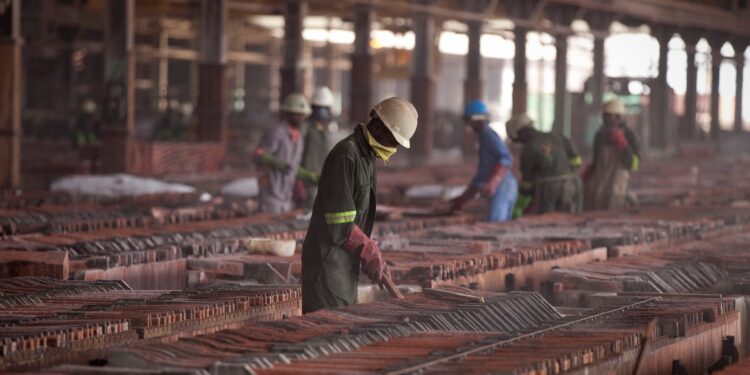5/31/2024–|Last updated: 5/31/202412:47 AM (Mecca time)
The major metals around the world (copper, silver, and gold) have turned into a winning horse since the beginning of 2024, in the race for the most profitable invested assets globally.
A survey – conducted by Anatolia based on global commodity exchanges and financial markets – reveals that metals have had the largest gains since the beginning of this year, outperforming the exceptional performance of the New York Stock Exchange.
These gains for the three metals come as inflation and interest rates continue to rise globally, in addition to central banks hedging risks by purchasing gold, while industrial demand for copper and silver has increased.
Copper is the king of industry
The survey shows that copper had the highest return for investors during the current year, at a rate of more than 30% until the end of the May 30 session at a value of $4.7 per kilogram.
The global demand for copper has increased since 2023 with the revolutions in artificial intelligence, as it is a major component used in the manufacture of everything, from electric cars to transmission lines, and data centers that support artificial intelligence.
During the current year, major countries – led by the United States – rushed to expand their investments in the copper market and increase their market share of it, by purchasing major stakes in international copper-producing companies.
Silver is an asset and a production input
As for silver, its movement path during the current year showed an increase in the price of an ounce by 29% until the end of yesterday’s session, Thursday, to $31.2.
The rise in prices of an ounce of silver globally is due to it benefiting from the same factors that gold benefited from, such as the increased demand for safe havens due to geopolitical risks.
Silver was also positively affected by expectations of an interest rate cut by the Federal Reserve Board (the US Central Bank) by the last quarter of this year, in addition to the rise in investment demand for silver.
Silver excelled this year, benefiting from the actual industrial demand for it, as it is an important component in many industries, most notably clean energy technologies, in which interest has recently increased worldwide.
Therefore, silver has a dual nature, acting as a financial asset and an industrial input.
Silver is an essential ingredient in solar panels, and with the industry’s strong growth, its use is expected to reach record levels this year.
The World Silver Authority expected that the silver market will face a supply shortage for the fourth year in a row during 2024, and may face the second largest supply gap ever this year, at 17%.
gold
Since the beginning of this year, gold prices have risen by 14.2% until the end of Thursday’s session to $2,350 per ounce, which is about $100 less than the historic peak recorded earlier last April.
The rise in gold prices comes primarily as global central banks continue to rush to buy gold, amid fears of accelerating inflation and geopolitical tensions.
In a total of the first quarter of 2024, central banks around the world bought 290 tons of gold, the highest level ever in that period, according to data from the World Gold Council.
China’s appetite for buying gold has also continued since the beginning of 2023, as the People’s Bank of China (the Chinese central bank) continued its purchases of gold for the 18th consecutive month during last April, raising its total possession of gold to 2,264.3 tons.
What about the rest?
A report – issued by the Wall Street Journal on May 17 – reveals that copper and silver are the two investments in the commodities and securities markets that achieve the most returns.
While American technology stocks outperformed gold, as investors in these stocks achieved returns of 20.1% since the beginning of this year.
Returns to investors in the 500 companies listed in the Standard & Poor’s (S&P 500) index amounted to about 14%, while returns to investors in the Dow Jones Industrial Average reached about 13.8%.
As for investors in oil contracts, their returns have amounted to only about 7% since the beginning of this year, according to crude market data.



